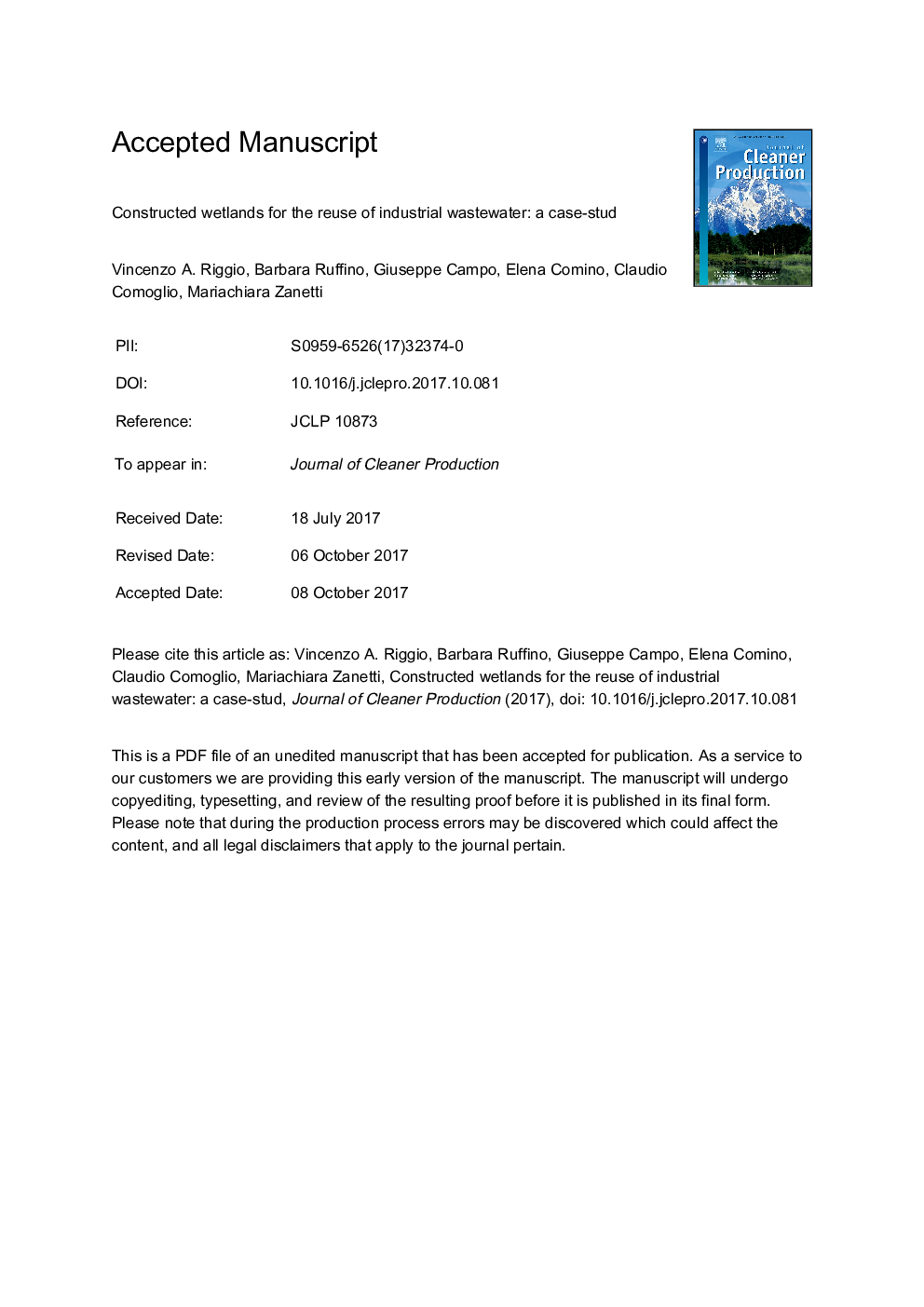| Article ID | Journal | Published Year | Pages | File Type |
|---|---|---|---|---|
| 8100240 | Journal of Cleaner Production | 2018 | 31 Pages |
Abstract
The use of phytoremediation systems to enhance the treatment of industrial wastewater coming from a standard depuration process in order to allow their reuse can potentially lead to several interesting benefits (costs savings for depuration processes, freshwater and energy supply with a consequent reduction of the overall environmental impact of the industrial sites). In this work the case study of a large automotive plant (FCA plant in Verrone, Piedmont, NW Italy) was analyzed, with the aim of evaluating the possible application of a phytoremediation system (constructed wetland, CW) to treat the effluents of its existing wastewater treatment plant (WWTP, currently discharged into a watercourse) and reuse them in the industrial processes. For this purpose, a pilot CW system was set up with two different configurations horizontal and vertical. Experiments were carried out to identify the one characterized by the best abatement rate of the pollutant concentrations of the plant effluents. Results showed that the horizontal submerged flow system (HF) was the most efficient phytoremediation system suitable for the aging of the effluents of the existing WWTP in view of their possible reuse in the industrial processes. Furthermore, costs related to its scaling-up for a real application demonstrated that the CW can be the cheaper option compared to a traditional treatment process for wastewater reuse. The amount of treated water which may be reused can range from 55% to 80% of the effluents from the existing WWTP, with a consequent reduction of more than 80% in the current water supply from aquifers.
Keywords
Related Topics
Physical Sciences and Engineering
Energy
Renewable Energy, Sustainability and the Environment
Authors
Vincenzo A. Riggio, Barbara Ruffino, Giuseppe Campo, Elena Comino, Claudio Comoglio, Mariachiara Zanetti,
